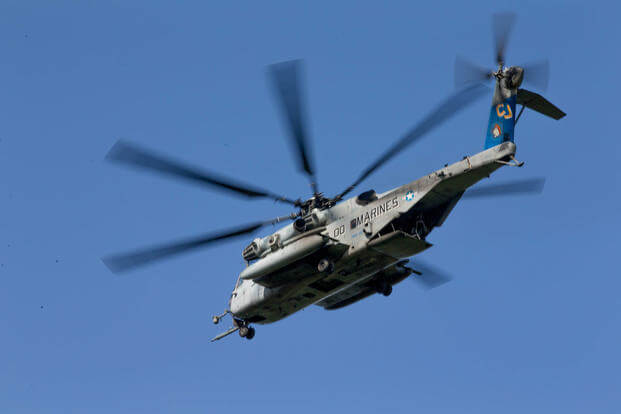A Marine Corps heavy-lift helicopter in Okinawa, Japan, was forced to make an unplanned landing after catching fire during a training flight, Marine officials announced today.
The incident took place around 5:20 p.m. local time Wednesday, officials with 1st Marine Aircraft Wing said in a statement. It was first reported by The New York Times.
The CH-53E Super Stallion, which belongs to 1st MAW, forward-based in Japan, had been conducting "regularly scheduled training" when the in-flight fire occurred, officials said.
The aircraft's crew made an emergency landing in a field near Okinawa's Northern Training Area, a sprawling stretch of rainforest used by U.S. forces for jungle training.
Officials said no crew members or civilians were injured in the emergency landing, and local first responders were able to arrive at the site and extinguish the fire quickly.
"The cause of this incident is under investigation and there is limited information at this time," officials said in the release. "We are currently working with local and military police to secure the site for follow-on investigation and everyone's safety."
For the Marine Corps, the emergency landing represents the second major aircraft incident within 12 months to take place on Okinawa, where residents are highly sensitive to Americans' presence in the region and frequently cite concerns about aviation safety.
On Dec. 13, 2016, an MV-22 Osprey crash-landed in shallow water after a botched refueling attempt that left the aircraft damaged. All five crew members survived the crash, some with injuries.
As a result, all Marine Ospreys in the Pacific were grounded for several days as a safety measure.
The Marine Corps announced in September that that incident was the result of pilot error.
-- Hope Hodge Seck can be reached at hope.seck@military.com. Follow her on Twitter at @HopeSeck.



























